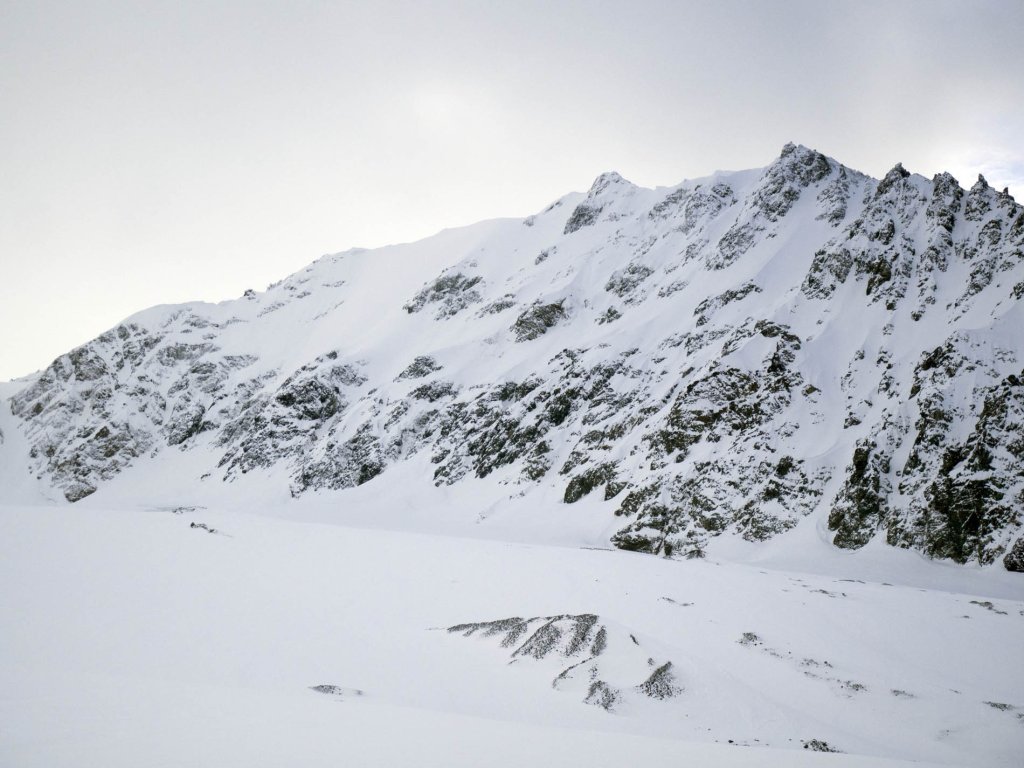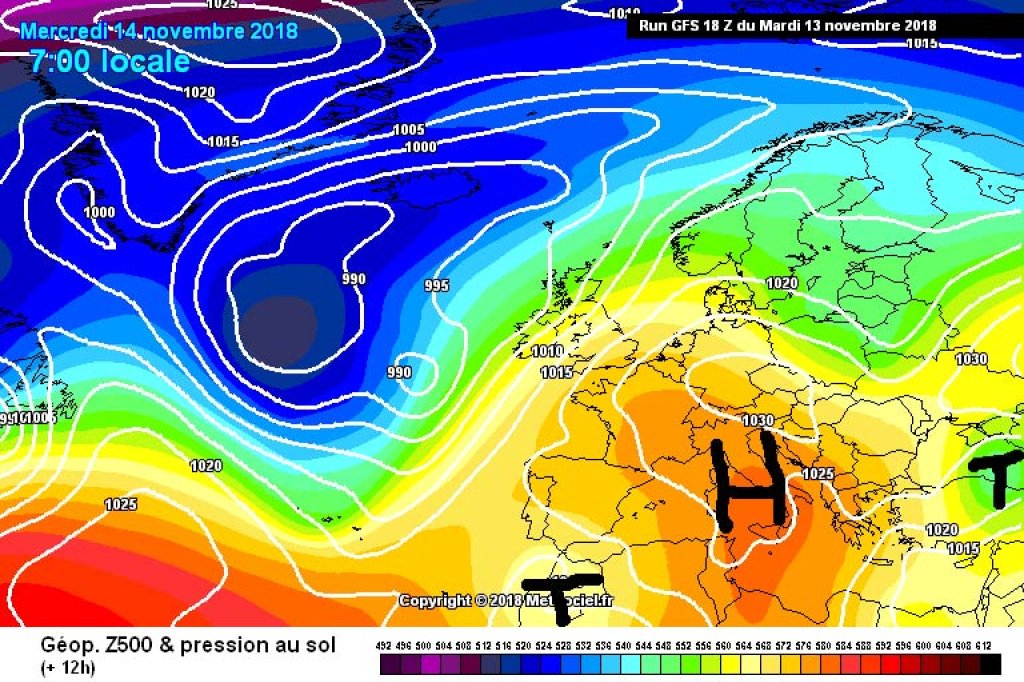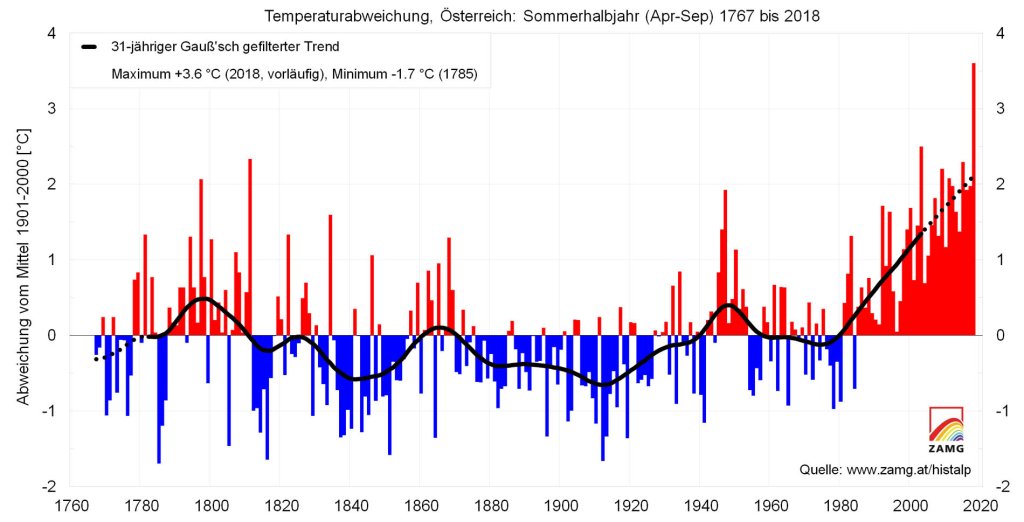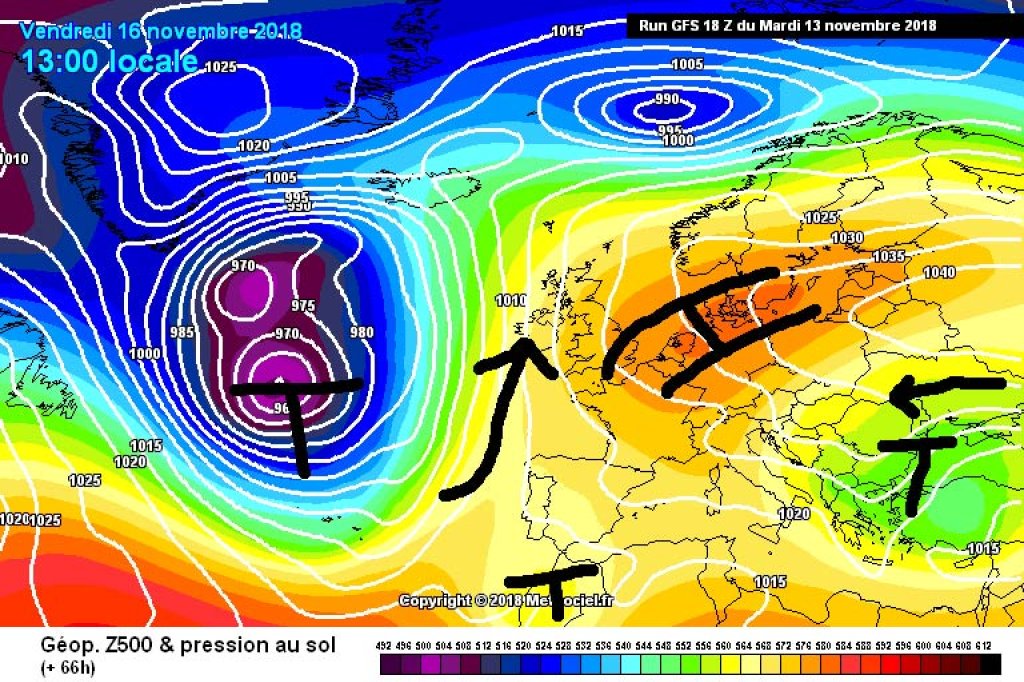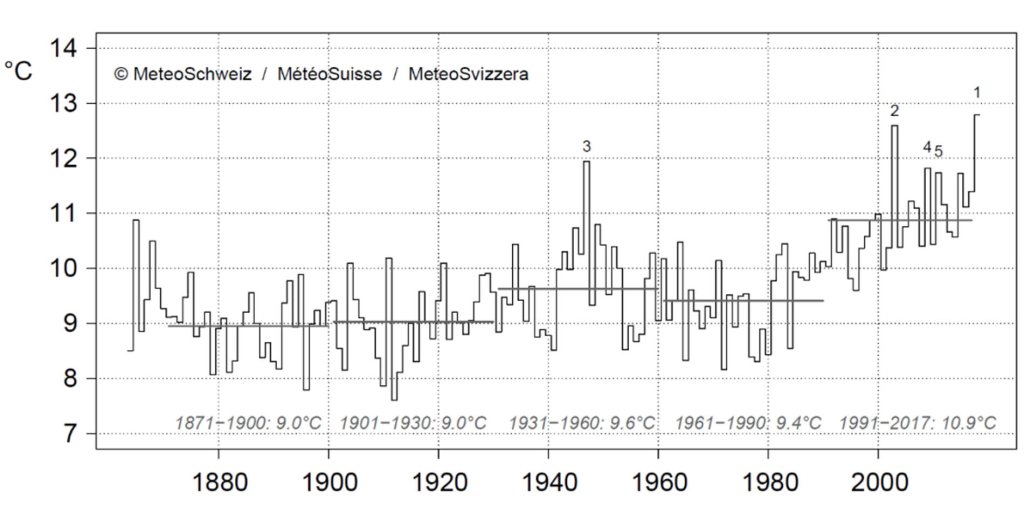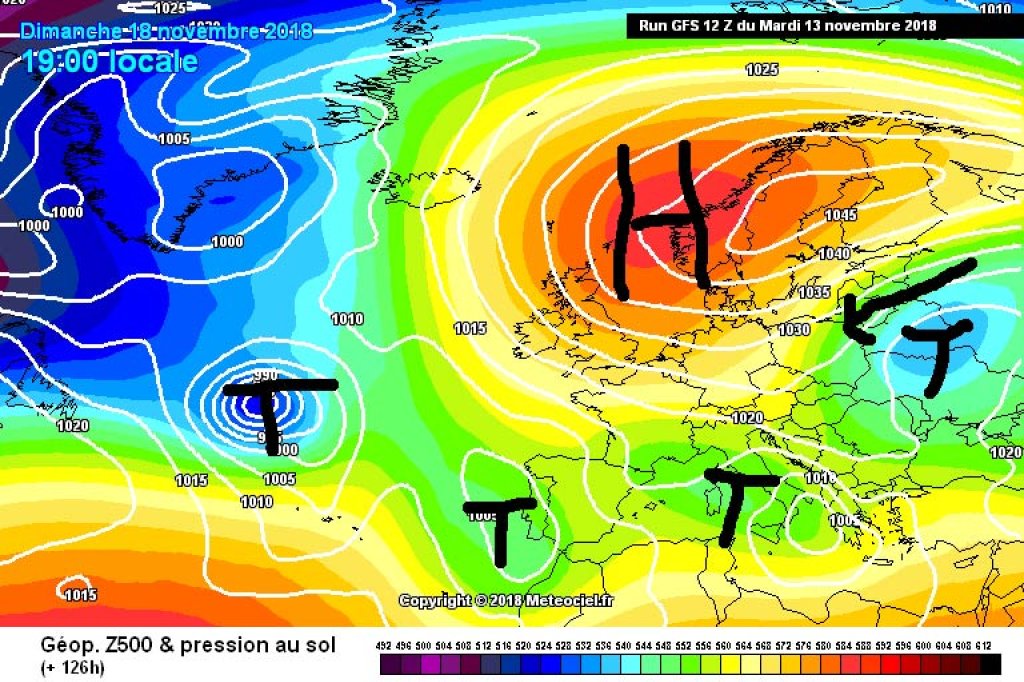Current situation
Until yesterday, the Alpine region was still in a mild SW current at the front of a low pressure system off the European Atlantic coast, which caused cloud congestion in the south and partly tough high fog, foehn and no winter feeling at all in the north. This is now slowly changing: a small offshoot of the low is drifting southwards and the rest is moving towards the Baltic States in an unexciting weather pattern.
The next Atlantic low is moving into position from the west and you might think that everything will stay the same. However, even small cattle make dung and the two troughs, which are located southwest and southeast of the Alps, will push an area of high pressure between them over the next few days that will extend far into northern Central Europe. Embedded in the high-altitude current on the eastern edge of this high, the low in the south-east moves back a little in our direction and brings cold air with it. At least in the Eastern Alps, the temperature "adapts to the season", as the weather forecast always says so nicely.
From today's perspective, we then completed the change from an Omega block to a high-over-low block at the weekend, with a sloping high over northern Estonia and Scandinavia and a low-pressure trough between the Azores and the Baltic States. Due to the easterly flow component, cold air from the east will continue to penetrate into the Alpine region and with a fresh north-easterly wind, it could become almost touchingly cold at high altitudes. Provided there is no high fog, it will remain widely sunny up to and including the weekend.
In terms of precipitation, the outlook is poor. With the arrival of the cold air masses, there may be a few flakes out of the fog at low altitudes (or perhaps from real clouds in the north-east at the weekend), but for heavy, base-forming snowfall we need the help of the Atlantic and it will remain pretty much on the sidelines for the time being due to the old, new blocking situation. Yes, sometimes the Mediterranean does it too, but even it doesn't feel inspired by this weather situation to perform at its wintry best.
